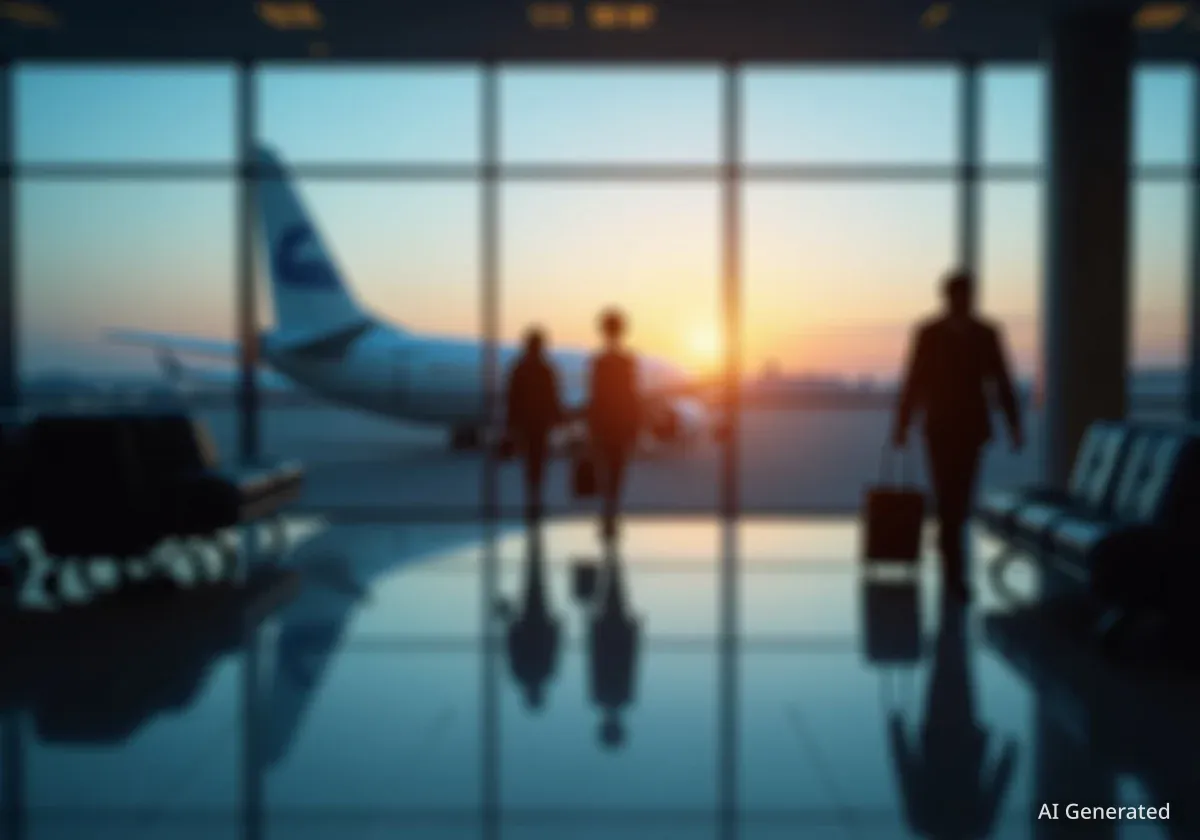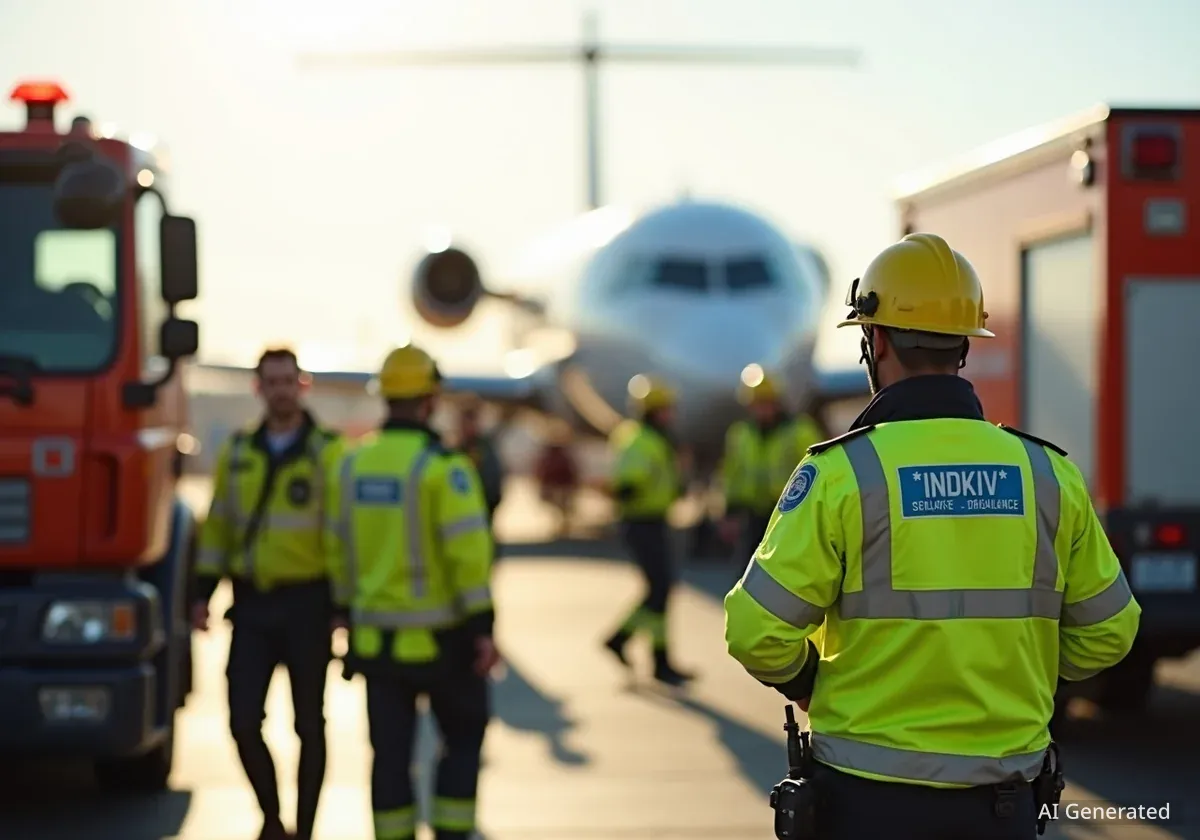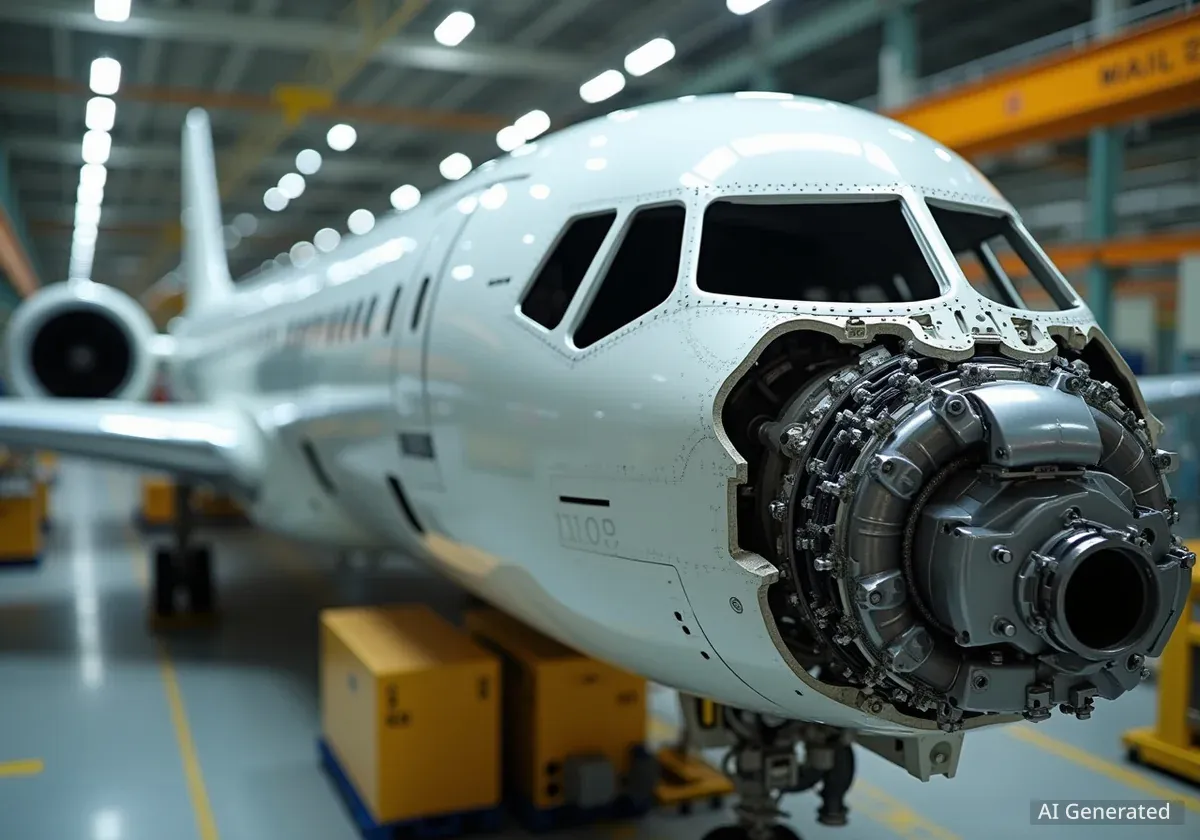Two aircraft made contact on Friday afternoon at Chicago's O'Hare International Airport. The incident involved a United Airlines flight that was moving towards its gate. Emergency services responded to the scene, but no injuries were reported among passengers or crew.
Key Takeaways
- Two planes clipped wings at O'Hare Airport on Friday.
- United Flight 2652 was involved while taxiing.
- The second aircraft was stationary with no passengers.
- No injuries were reported, and passengers deplaned normally.
- Emergency crews responded as a precaution.
Incident Details at O'Hare
The event occurred when United Airlines Flight 2652 was navigating on the airfield. This aircraft was in the process of taxiing to its designated gate. During this movement, it came into contact with another plane.
A United spokesperson confirmed the details. The contact point was the horizontal stabilizer of the second aircraft. A horizontal stabilizer is a critical component located at the tail of an airplane. Its purpose is to help keep the aircraft stable and flying straight. NASA's website provides information on this part's function.
Aircraft Stabilizer Function
The horizontal stabilizer is a fixed wing section on the tail. It is crucial for maintaining an aircraft's pitch stability. This means it helps keep the nose of the plane from moving up or down too much, ensuring a straight flight path.
Response and Passenger Safety
Emergency crews were immediately dispatched to O'Hare Airport following the report. This is standard procedure for any aviation incident involving aircraft contact. Despite the response, the situation did not result in any harm to individuals.
All passengers on Flight 2652 deplaned as expected. They exited the aircraft without any complications. United Airlines stated that the second plane involved in the incident was stationary at the time. Crucially, there were no passengers on board this second aircraft.
"Flight 2652 was taxiing to the gate when it made contact with the horizontal stabilizer of another aircraft," a United spokesperson said.
Impact on Airport Operations
While the immediate area of the incident was secured, specific details regarding broader airport delays were not immediately available. Such events often lead to temporary disruptions as investigations begin and aircraft are moved. Airport authorities prioritize safety during these times.
The Federal Aviation Administration (FAA) or the National Transportation Safety Board (NTSB) would typically investigate incidents of this nature. Their investigations aim to determine the exact sequence of events and any contributing factors. This process helps prevent similar occurrences in the future.
Aviation Safety Protocols
Aviation safety relies on strict protocols for ground movements and air traffic control. Even minor incidents like wing clips trigger comprehensive reviews. This commitment to safety helps maintain the industry's high safety record. Airports have designated taxiways and procedures to manage aircraft movements safely.
Previous Incidents and Safety Record
Incidents involving aircraft contact on the ground are rare but do occur. These often involve minor damage rather than serious safety risks. The aviation industry maintains a strong focus on preventing all types of incidents, both in the air and on the ground.
- Ground collisions or contacts typically happen during taxiing.
- Factors can include pilot error, ground crew miscommunication, or congested apron areas.
- Modern airports use advanced systems to guide pilots and ground vehicles.
According to aviation safety data, ground incidents account for a small percentage of overall aviation occurrences. However, each event is thoroughly examined to enhance safety measures. This continuous improvement process is a cornerstone of global aviation safety.
The incident at O'Hare serves as a reminder of the complexities involved in managing air traffic, even on the ground. Thousands of flights operate daily across the United States. Maintaining safe distances and clear communication are paramount to preventing such occurrences.
Next Steps and Investigations
Following the incident, both aircraft will undergo inspections. Engineers will assess the extent of the damage to the horizontal stabilizer and other parts. Repairs will be necessary before either plane can return to service. This ensures that the aircraft meet all safety standards before flying again.
United Airlines will likely conduct its own internal review in addition to any external investigation. These reviews aim to understand what happened and implement any necessary changes to operations or training. The goal is always to prevent future incidents and uphold safety standards.





